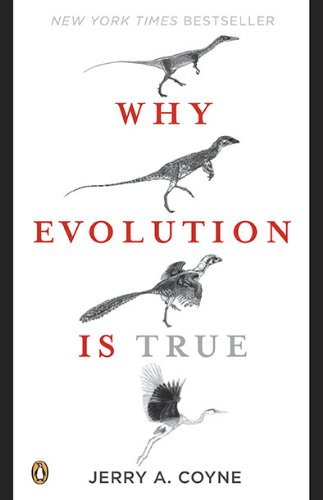Evolution in the Laboratory Occurs Very Quickly
One approach is to compare the rates of evolution in the fossil record with those seen in laboratory experiments that used artificial selection, or with historical data on evolutionary change that occurred when species colonized new habitats in historical times. If evolution in the fossil record were much faster than in laboratory experiments or colonization eventsóboth of which involve very strong selectionówe might need to rethink whether selection could explain changes in fossils. But in fact the results are just the opposite. Philip Gingerich at the University of Michigan showed that rates of change in animal size and shape during laboratory and colonization studies are actually much faster than rates of fossil change: from 500 times faster (selection during colonizations) to nearly a million times faster (laboratory selection experiments). And even the fastest rates of evolution in the fossil record are nowhere near as fast as the slowest rates seen when humans practice selection in the laboratory. Further, the average rates of evolution seen in colonization studies are large enough to turn a mouse into the size of an elephant in just 10,000 years!
Notes:
So quickly in fact that scientists could turn an elephant into a mouse in just 10,000 years.
Folksonomies: evolution experimentation
Keywords:
fossil record (0.993273 (negative:-0.139717)), laboratory experiments (0.963695 (neutral:0.000000)), laboratory selection experiments (0.857798 (neutral:0.000000)), humans practice selection (0.832586 (neutral:0.000000)), colonization studies (0.644359 (positive:0.524896)), rates (0.642952 (positive:0.087047)), Laboratory Occurs (0.639097 (positive:0.409613)), Philip Gingerich (0.636685 (neutral:0.000000)), fossil change (0.622306 (negative:-0.297013)), new habitats (0.620217 (neutral:0.000000)), artificial selection (0.610718 (neutral:0.000000)), strong selectionówe (0.608451 (neutral:0.000000)), evolution (0.607000 (positive:0.029405)), historical data (0.592683 (neutral:0.000000)), evolutionary change (0.587566 (neutral:0.000000)), historical times (0.568063 (neutral:0.000000)), animal size (0.563180 (neutral:0.000000)), fastest rates (0.560517 (negative:-0.532457)), average rates (0.559545 (negative:-0.211085)), slowest rates (0.539584 (neutral:0.000000)), elephant (0.405034 (positive:0.396036)), mouse (0.381790 (positive:0.396036)), fact (0.362136 (positive:0.123565)), opposite (0.296190 (neutral:0.000000)), scientists (0.281889 (positive:0.409613)), approach (0.280978 (positive:0.392740)), fossils (0.279194 (neutral:0.000000)), shape (0.275675 (neutral:0.000000)), eventsóboth (0.275179 (neutral:0.000000)), species (0.275031 (neutral:0.000000))
Concepts:
Evolution (0.989982): dbpedia | freebase | opencyc
Paleontology (0.668767): dbpedia | freebase | opencyc
Fossil (0.602223): dbpedia | freebase | opencyc
Natural selection (0.494660): dbpedia | freebase
Charles Darwin (0.466151): dbpedia | freebase | opencyc | yago





